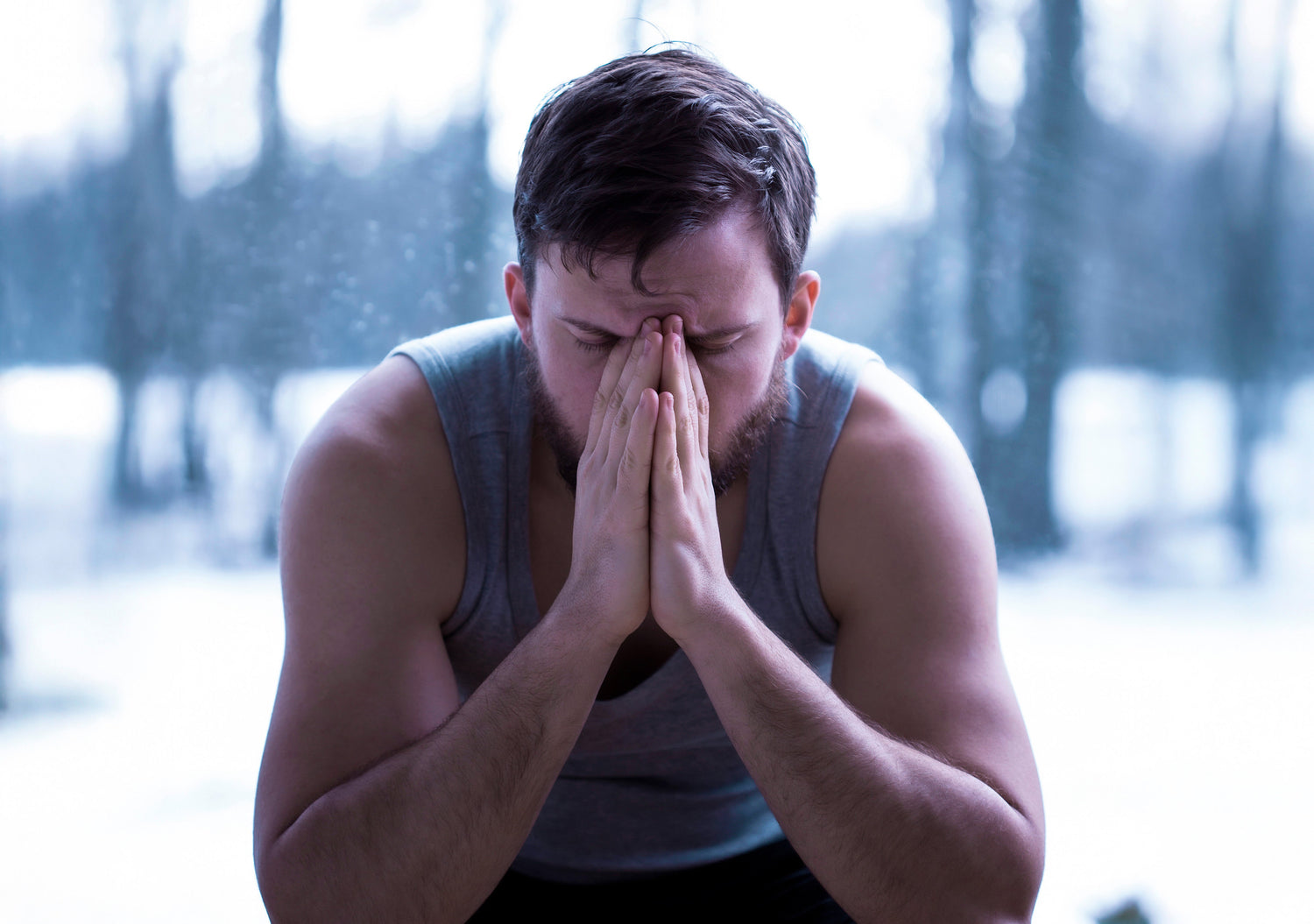Right now, as you read this in November, your testosterone levels are approximately 20-30% lower than they were in August. This isn't speculation or wellness industry fearmongering. This is measurable, documented biological reality that affects every man reading this, yet somehow nobody warned you that winter systematically destroys your hormonal foundation while you're busy worrying about holiday shopping and year-end deadlines. National Testosterone Awareness Day on November 17th exists precisely because millions of men are walking around with crashed hormone levels, wondering why they feel like garbage, can't build muscle, and have the sex drive of a neutered housecat, all while being told it's “Just winter blues." Here's the truth that should terrify you: nature is actively working against your masculinity for the next four months, and unless you understand the science and implement specific countermeasures, you're going to emerge from winter softer, weaker, and wondering what the hell happened.
The Seasonal Massacre Nobody Talks About
Studies tracking over 11,000 men found total and bioavailable testosterone peaks in August through October, then plummets through winter, with some populations experiencing up to 31% variation in free testosterone across seasons (1). This isn't a minor fluctuation like your stock portfolio. This is the difference between feeling like a warrior and feeling like you need a nap at 2 PM. Between adding muscle and adding belly fat. Between wanting your partner and wanting Netflix.
The biological conspiracy goes deeper than you imagine. Winter's reduced sunlight slashes your vitamin D levels, which directly correlates with testosterone production. A comprehensive review of 17 trials showed vitamin D deficiency, endemic in winter months, impairs testosterone production through genomic pathways in your Leydig cells, the actual factories that produce your male hormones (4). Meanwhile, holiday stress elevates cortisol, which actively antagonizes testosterone. Research on seasonal affective disorder links high cortisol to 15-20% additional testosterone reductions, with chronic winter stress suppressing gonadal function to the point where athletes experience overtraining-like symptoms without actually overtraining (5).

Why Every Generation Is Getting Hit Differently
Gen Z Men (18-26): The Optimization Generation Under Attack
You're tracking every metric, following every biohacker, chasing that "soft life" optimization on TikTok, yet winter is destroying your carefully calibrated system. Your demographic shows the most dramatic seasonal swings because your baseline testosterone should be at lifetime peaks, making the 20-30% winter decline feel like falling off a cliff. You go from feeling invincible in September to questioning your sexuality by December, all while your Instagram feed shows dudes claiming they're "built different" when really, they're just photographing old summer pics.
Millennial Men (27-42): The Stress Sandwich Disaster
Already managing career pressure, family responsibilities, and the realization that 40 is approaching faster than expected, you're hit with winter testosterone decline on top of age-related drops. Studies show men over 30 lose 1-2% of testosterone annually, but winter accelerates this to feel like you've aged five years in three months (2). The mental fog you're experiencing isn't just deadline stress; it's your brain operating on hormonal fumes while trying to maintain peak performance.
Late Gen X Men (43-48): The Biological Betrayal
You remember when winter didn't matter, when you could power through anything with coffee and determination. Now you're discovering that seasonal testosterone variations hit harder with age, with your body less capable of compensating for hormonal fluctuations. The 20-30% winter decline compounds with naturally lower baseline levels, creating perfect conditions for rapid muscle loss, stubborn fat gain, and the distinctive "dad bod acceleration" that happens between Thanksgiving and New Year's.
The Science of Seasonal Sabotage
Let's get specific about what's happening in your body right now:
The Circadian Catastrophe
Your hypothalamic-pituitary-gonadal axis, the command center for testosterone production, operates on light cues. Winter's shortened photoperiod disrupts this system so severely that luteinizing hormone, the signal that tells your testes to produce testosterone, drops by 15-25% (3). Andrew Huberman's research on circadian biology confirms that less morning light exposure directly translates to less testosterone production, creating a cascade of hormonal dysfunction that affects everything from muscle protein synthesis to neurotransmitter production.
The Vitamin D Disaster
Here's the cascade that's destroying your gains: Less sunlight means less vitamin D synthesis. Vitamin D is literally required for testosterone production in Leydig cells. Studies show men with vitamin D levels below 30 ng/mL have significantly lower free and total testosterone, and by December, 75% of men in northern climates fall below this threshold (4). You're essentially operating a hormone factory without raw materials.
The Stress Hormone Coup
Winter stress from holidays, year-end pressures, and seasonal affective patterns elevates cortisol consistently 15-20% above summer baselines. Cortisol doesn't just compete with testosterone; it actively suppresses its production while promoting enzymatic conversion of testosterone to estrogen (6). You're not just losing testosterone; you're literally converting it to its opposite.
The Evidence-Based Fight Back Protocol
Stop accepting decline as inevitable. Here's the scientific approach to maintaining optimal testosterone through winter:
Light Therapy Optimization
Using a 10,000-lux light therapy lamp for 20-30 minutes each morning isn't wellness theater; it's biological necessity. This exposure resyncs circadian rhythms and boosts testosterone through enhanced serotonin conversion and improved luteinizing hormone signaling. Position the lamp at eye level, 16-24 inches from your face, while having morning coffee or breakfast. This single intervention can prevent up to 40% of seasonal testosterone decline.
Strategic Resistance Training
Compound movements like squats and deadlifts don't just build muscle; they spike testosterone acutely by 15-20% post-workout (7). Winter requires more strategic programming: 3-4 weekly sessions focusing on heavy compounds at 75-85% intensity, keeping sessions under 60 minutes to prevent cortisol elevation. The hormonal response from proper weight training can offset up to half of winter's testosterone suppression.
Nutritional Hormone Support
Vitamin D supplementation at 2,000-4,000 IU daily directly supports testosterone production, with studies showing increases of 10-20% in deficient men. Combine with 15mg zinc, 400mg magnesium, and 2-3g omega-3s for comprehensive hormonal support. Dietary fat should comprise 25-30% of calories, emphasizing saturated and monounsaturated sources that provide cholesterol, the precursor to all steroid hormones including testosterone.
The Supplement Stack That Changes Everything
Deep Wood Libido & Hormone Optimizer becomes your foundation for comprehensive hormone support. Its natural blend of fenugreek, tongkat ali, and zinc specifically targets testosterone production pathways disrupted by winter, with clinical studies showing 10-20% increases in free testosterone with consistent use. Take it twice daily, morning and evening, to maintain steady optimization throughout winter's assault on your hormones.
Nitraflex Advanced amplifies your training response when testosterone is naturally suppressed. The citrulline and beta-alanine enhance blood flow and endurance, enabling heavier lifts that create the mechanical tension necessary for natural testosterone elevation. Pre-workout timing ensures you're maximizing the acute hormonal response from training when your body needs it most.
Creatine Powder provides muscle preservation support when winter testosterone decline threatens lean mass. That 5g daily dose maintains strength and muscle fullness, with some studies suggesting modest testosterone increases in resistance-trained men through improved cellular energy and training capacity.
Your Winter Testosterone Battle Plan
Morning starts with Deep Wood plus 2,000-4,000 IU vitamin D and 20 minutes of light therapy. This triple intervention addresses the primary causes of winter testosterone decline simultaneously. Pre-workout, Nitraflex Advanced ensures your training stimulus is strong enough to create hormonal adaptation despite seasonal suppression. Post-workout, Creatine Powder in your shake supports recovery and muscle maintenance when natural anabolic processes are compromised.
Track everything that matters: morning body temperature (lower indicates suppressed metabolism), workout performance metrics (strength loss indicates hormonal issues), sleep quality (poor sleep crashes testosterone further), and mood/energy ratings (direct correlates of testosterone status). For those serious about optimization, quarterly blood work showing total and free testosterone, vitamin D, and cortisol provides objective data for adjustment.
The Choice That Defines Your Winter
Right now, you're standing at the crossroads every man faces in November. Path one: accept that winter will systematically dismantle your hormonal health, your muscle mass, your energy, and your drive, emerging in spring wondering why you feel and look worse despite "trying." Path two: acknowledge the biological reality of seasonal testosterone decline and implement evidence-based countermeasures that maintain your masculinity when nature wants to destroy it.
National Testosterone Awareness Day isn't about selling supplements or creating false panic. It's about recognizing that seasonal hormone decline is real, measurable, and defeatable with the right approach. The science is clear. The solutions exist. The only question is whether you'll act on this knowledge or become another casualty of winter's hormonal massacre.
Because Winter is coming for your testosterone. The question is: What are you going to do about it?
References
- Svartberg J, Jorde R, Sundsfjord J, et al. (2003). Seasonal Variation of Testosterone and Waist to Hip Ratio in Men: The Tromsø Study. The Journal of Clinical Endocrinology & Metabolism, 88(7), 3099-3104.
- Giltay EJ, Enter D, Zitman FG, et al. (2012). Salivary testosterone: associations with depression, anxiety disorders, and antidepressant use in a large cohort study. Journal of Psychosomatic Research, 72(3), 205-213.
- Smith RP, Coward RM, Kovac JR, Lipshultz LI. (2013). The evidence for seasonal variations of testosterone in men. Maturitas, 74(3), 208-212.
- Pilz S, Frisch S, Koertke H, et al. (2011). Effect of Vitamin D Supplementation on Testosterone Levels in Men. Hormone and Metabolic Research, 43(3), 223-225.
- Rosenthal NE, Sack DA, Gillin JC, et al. (1984). Seasonal Affective Disorder: A Description of the Syndrome and Preliminary Findings with Light Therapy. Archives of General Psychiatry, 41(1), 72-80.
- Kraemer WJ, Ratamess NA. (2005). Hormonal responses and adaptations to resistance exercise and training. Sports Medicine, 35(4), 339-361.
- Hayes LD, Bickerstaff GF, Baker JS. (2010). Interactions of cortisol, testosterone, and resistance training: influence of circadian rhythms. Chronobiology International, 27(4), 675-705.


